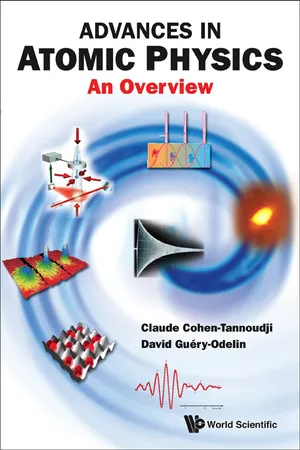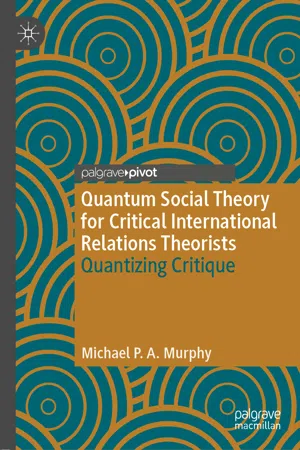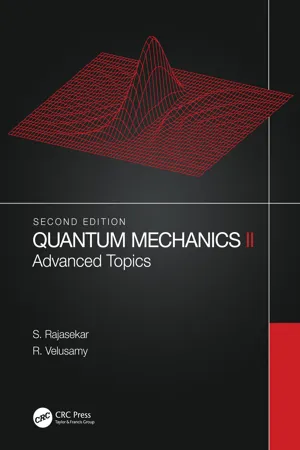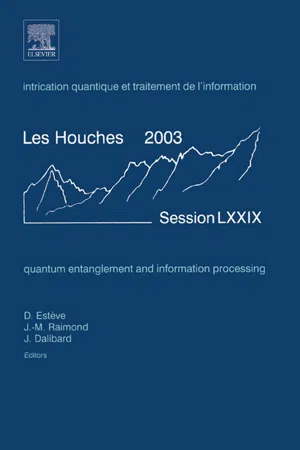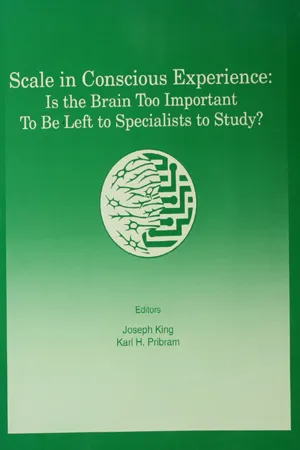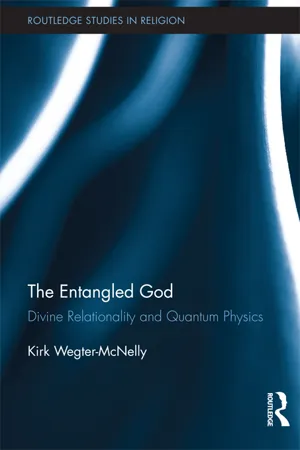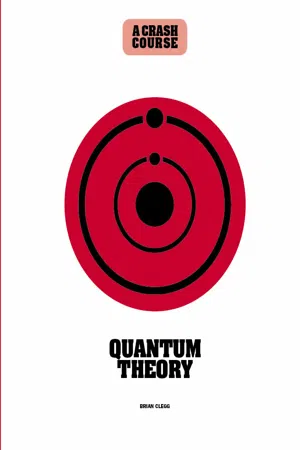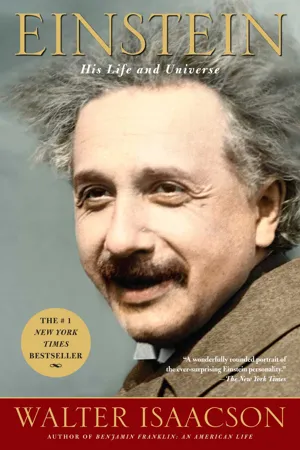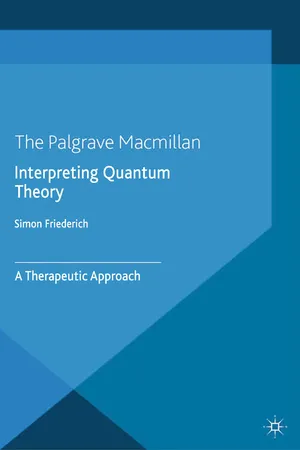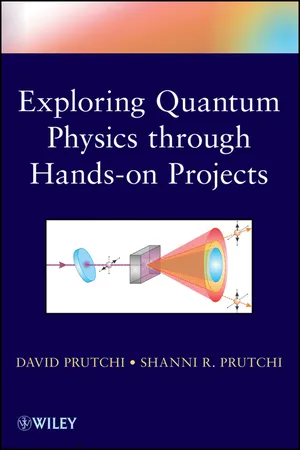Physics
Quantum Entanglement
Quantum entanglement is a phenomenon in quantum physics where two or more particles become interconnected in such a way that the state of one particle instantly influences the state of the other, regardless of the distance between them. This interconnectedness challenges classical notions of locality and suggests a fundamental interconnectedness at the quantum level.
Written by Perlego with AI-assistance
Related key terms
Related key terms
1 of 4
Related key terms
1 of 3
11 Key excerpts on "Quantum Entanglement"
- eBook - ePub
Applied Quantum Computers
Learn about the Concept, Architecture, Tools, and Adoption Strategies for Quantum Computing and Artificial Intelligence (English Edition)
- Dr. Patanjali Kashyap(Author)
- 2023(Publication Date)
- BPB Publications(Publisher)
These factors permit quantum computers to resolve certain classes of complex problems much more competently than traditional computers. Though conventional computers would take additional time for each variable added, quantum computers can connect the belongings mentioned preceding to solve complex problems in a method that cumulate the problem size. These reasons for a lesser increase in the time essential to resolve the problem.Entanglement
It is nothing more than a state of association among two or more quantum objects. They need not even be a similar object. Entanglement is a natural existence in quantum mechanics. Due to entanglement, anything happening to one of the objects will instantaneously affect its partner. This is referred to as a non-local connection, which is not possible in classical mechanics involving everyday objects because communication faster than the speed of light is forbidden. But non-locality and entanglement are ordinary in the quantum world.Precisely, this is just the postponement of the impression that particles can occasionally act like spread-out waves. If two particles come into close interaction with each other, they can turn out to be correlated and behave as a single unit. Even more unbelievably, if one of them is put into a quantum superposition of existence in two states on one occasion, then the second particle will also be forced into a superposition. So, by measuring one, we abolish the superposition of its distant companion, instantaneously and irrespective of the distance between them. However, Quantum Entanglement is not very useful to clarify non-scientific concepts such as telepathy, because it is embarrassing to the subatomic kingdom.In entanglement, essentially two or more dissimilar qubits can be linked, despite being physically away from each other. Einstein labelled entanglement as ‘spooky action at a distance’. From the QC point of view, as soon as qubits are entangled, the state of each qubit is not autonomous from the rest. Quantum computers feat this phenomenon to deliver a powerful speed-up in calculations. Building a quantum computer with the level of exactness is mandatory to create, manipulate, and measure qubits and it is tremendously challenging, as shown in Figure 2.8 - eBook - ePub
Advances in Atomic Physics
An Overview
- Claude Cohen-Tannoudji, David Guéry-Odelin(Authors)
- 2011(Publication Date)
- WSPC(Publisher)
We will conclude this chapter with the following remark. Quantum concepts are not easy to grasp. Feynman said that “no one really understands quantum physics”! Entangled states illustrate in the most spectacular way the strangeness and the non-intuitive character of quantum mechanics, though they allow one to give a more precise meaning to concepts, such as non-local realism or complementarity, which are usually presented in a more qualitative and vague way. A very interesting feature of the evolution of this research field is that entangled states are not only useful for deepening our understanding of quantum physics. They can be experimentally produced, and gedanken experiments of the early days of quantum mechanics can now be realized in laboratoires.We know of course that quantum mechanics is already present in practically all technical objects that we use now in our “daily lives”: lasers, laptops, mobile phones, magnetic resonance imaging, etc. It was not obvious however that seemingly abstract concepts, such as entanglement, would find practical applications. As an example, quantum cryptography, based on the sharing of entangled pairs of photons, is already used as the most secure method for exchanging messages.Entangled states are now at the heart of the development of a very promising field, called “quantum information” which exploits the quantum correlations of two entangled states for transmitting and processing information. Several groups in the world are trying to implement quantum gates which could be the building blocks of quantum computing machines of unprecedented performances. Of course, major difficulties have to be solved before reaching this goal, such as the reduction of decoherence processes to an acceptable level. But, one can reasonably hope to see an entirely new technology emerging from these investigations. Obviously, we cannot discuss all these developments in this book. We have chosen to present here an overall view of various features of quantum systems where entanglement plays an essential role. - eBook - ePub
Quantum Social Theory for Critical International Relations Theorists
Quantizing Critique
- Michael P. A. Murphy(Author)
- 2020(Publication Date)
- Palgrave Macmillan(Publisher)
appear to be that way, as the time scales relevant for local causation can be compressed beyond recognition by the naked eye.Like it does with the notions of superpositionality and the observer effect , quantum mechanics throws a wrench into the simplicity of locality by allowing non-local causation through a phenomenon called entanglement . This phenomenon describes the connection between two substances such that they remain connected regardless of distance between them, and can continue to “act” on one another in an immediate way despite the distance separating them (thus breaking the limit of the speed of light). Originally hypothesized as an answer to irregularities appearing in the mathematical models of quantum mechanics, entanglement was originally theorized through thought-experiments, where physicists followed the implications of the theory through logical deductions. Dismissed by Einstein as “spooky action at a distance,” entanglement became an idea non grata in the mainstream of physics that cared more about exploring quantum ideas experimentally than philosophically and was left to the mystic types who saw quantum mechanics as describing a new religious consciousness.This changed somewhat in the early 1980s, as the principle of entanglement was proven by a research team led by Alain Aspect, who set out to experimentally verify the earlier thought-experiments of Einstein, Podolsky, and Rosen (Aspect et al. 1982a , b ). Through today, work continues to push the experimental boundaries of entanglement , which will be an essential feature of quantum computer networks. Recent advances include an electron spin entanglement observed at a distance of 1.3 kilometres (Hensen et al. 2015 ), and a satellite-based experiment which demonstrated entanglement effects over 1200 kilometres apart (Yin et al. 2017 - eBook - ePub
Quantum Mechanics II
Advanced Topics
- S. Rajasekar, R. Velusamy(Authors)
- 2022(Publication Date)
- CRC Press(Publisher)
7 Quantum EntanglementDOI: 10.1201/9781003172192-77.1 Introduction
Entanglement, first coined by Schrödinger as Verschra ‥nkung, is a phenomenon where a strong correlation exists between the subsystems of a composite state, regardless of the distance between them [1 ]. He observed that the maximal knowledge of a whole system does not necessarily include knowledge of all its subsystems even if they are totally divided from each other and do not influence each other at the present time. Quantum systems display many new features like superposition of quantum states, interference, tunnelling which are unknown in classical systems even for a single particle system. There are further differences that manifest themselves in composite quantum systems in the form of entanglement which is a type of correlation between particles that have no classical counterpart. Schrödinger first recognized a feature implying the existence of global states of composite systems that cannot be written as a product of the states of individual systems. This phenomenon is known as entanglement [1 ]. Entanglement between two states refers to the situation that if one state is changed then the other state changes automatically.Consider a particle with two states| 0 〉and| 1 〉. It may be a photon with vertical polarization state or horizontal polarization state. Or it may be an electron with spin-up state or spin-down state. Now, think of a composite system of two such particles. First, note that each of the two vector spaces is spanned by similar sets of two basis vectors:| 0 〉 , | 1 〉and| 0 〉 , | 1 〉. Since the composite system space of two particles is produced by tensor product, we getH 1⊗H 2= H(7.1)⊗| 0 〉| 1 〉| 0 〉 | 1 〉==| 0〉 1| 0〉 2| 0〉 1| 1〉 2| 1〉 1| 0〉 2| 1〉 1| 1〉 2.| 00 〉| 01 〉| 10 〉| 11 〉Thus,| 00 〉,| 01 〉,| 10 〉,| 11 〉are the set of the four basis vector of the new entangled space H - eBook - ePub
Quantum Entanglement and Information Processing
Lecture Notes of the Les Houches Summer School 2003
- (Author)
- 2004(Publication Date)
- Elsevier Science(Publisher)
quant-ph/0106119 .1 Note, however, that in contrast to classical communication no information is physically transferred via a quantum channel. Instead, non-local correlations are established via local measurements and are subsequently utilized for communication or computation purposes.2 A further step is the utilization of higher-dimensional entanglement. Higher-dimensional quantum systems have several interesting properties, for example fundamental tests of quantum mechanics provide more striking divergence from classical theory with respect to tests of non-locality [20 ]. Further, the increased complexity provides fertile ground for the development of new and more efficient protocols not possible classically or even with qubits [14 ,21 ,22 ]. We have realized several experiments exploring Quantum Entanglement in higher-dimensional Hilbert spaces using orbital angular momentum of photons [23 –25 ]. In a recent experiment we demonstrated quantum tomography of a qutrit, a three dimensional orbital angular momentum state of photons. This is the first experiment which provides full control over the quantum state of a triggered qutrit and is thus of importance for the implementation of more advanced quantum communication protocols [26 ,27 - eBook - ePub
Scale in Conscious Experience
Is the Brain Too Important To Be Left To Specialists To Study?
- Joseph S. King, Karl H. Pribram, Joseph S. King, Karl H. Pribram(Authors)
- 2013(Publication Date)
- Psychology Press(Publisher)
t) = 0. When the wave function is entangled, we find that no matter how far the particles are apart, they are still coupled by a quantum potential. In this case the trajectories are correlated in the sense that the trajectory of particle 1 depends on the position of particle 2 at a given time t. Thus the particles are in some sense, “together yet apart”. In other words, they are non-separable because they are linked by a common quantum potential.To make them separable, the wave function must be written in a product form, viz ΨA (r1 ,t)ΨB (r2 ,t). It is not difficult to show that if the classical potential can also be written as a product, then the two particles become completely separate in their behaviour. This means that all systems with entangled wave functions are non-separable.Another feature that emerges is that the quantum potential does not necessarily fall off as the distance between the two particles increases, i.e.,This implies that for systems in an entangled state, it may never be possible to regard the two systems as separate even if we separate them by an infinite distance. Since the entangled state is the most general state possible, I feel that this calls in to question the use of any form of reductionism in quantum theory. If quantum theory truly reflects nature, then we must abandon any form of reductionism in our attempts to understand nature. It is this feature that I regard as the key element which may be of utmost importance in understanding mind-matter relationship, a feature that I wish to address in more detail later.There is one final aspect of the quantum potential that I would like to discuss. Recall that it is the quantum potential that offers an explanation of the EPR situation, but it does so in a nonlocal way. To see this we need to analyse the measurement used in the EPR situation outlined earlier in this section. Recall that the presence of the measuring apparatus introduces a new quantum potential that entangles the apparatus wave function with the wave function of the system that is being measured. In the two-body case with an entangled wave function, one finds that the wave function of the second system also becomes entangled with the apparatus wave function and it is this entanglement that gives rise to the nonlocal effect. - eBook - ePub
The Entangled God
Divine Relationality and Quantum Physics
- Kirk Wegter-McNelly(Author)
- 2012(Publication Date)
- Routledge(Publisher)
unclassical about quantum theory's use of the superposition principle. This will allow us to consider briefly several of the more prominent interpretations—and even revisions—of the basic theory that have been put forward. And once we have surveyed the broader interpretive landscape, we will be in a good position to understand the various interpretations of Quantum Entanglement to be discussed in the next chapter.What does it mean to say that superposition implies the nonclassical, “wave-like” nature of quantum particles (photons, electrons, protons, and the like)? To be concrete, let's return to the photon. We will focus on the polarization values TV and SV of the property “vertical polarization” (this is still using classical language, pace the challenge of imaging particles having polarization) along with the respective measurement outcomes T and S. The classical physicist begins with the simple observation that these two outcomes are, in fact, mutually exclusive—one never finds both outcomes at the same time in a single measurement. She then infers, straightforwardly, that the corresponding values of the property must be mutually exclusive as well, in the sense that the vertical polarization state of any photon must always be linked to one value or the other—TV or SV —and nothing else. In the previous chapter we referred to this inference as faithful measurement.The quantum physicist rejects this inference. From the standard5 interpretive point of view, any simple sum6 of two or more classical states is itself regarded as a physically possible state, even though the values that comprise the sum are associated with mutually exclusive outcomes. For example, TV and SV are perfectly acceptable classical states—in the sense that each ascribes a particular value to a particular property. They are also mutually exclusive states; no combination of these two states, such as TV + SV , makes any sense from the classical point of view. According to quantum theory, however, classically allowable states can be added together or “superimposed” in this manner (see Figure 4.2 - eBook - ePub
- Brian Clegg(Author)
- 2019(Publication Date)
- Ivy Press(Publisher)
This moves away from the idea of wave function collapse and instead proposes that, effectively, all possible outcomes of quantum interactions occur, creating vast numbers of different universes. ENTANGLED PARTICLES John Bell writes his paper “On the Einstein—Podolsky—Rosen Paradox,”” establishing the Bell’s inequality measure. This is a way to practically test whether or not entangled particles truly can interact instantly at any distance, or whether there are “hidden variables” that predetermine the outcome. DATA ENCRYPTION Chinese researchers led by Pan Jian-Wei first send entangled photons from the satellite Micius to ground stations on Earth over 750 miles (1,200 km) apart. This makes it practical to use Quantum Entanglement to provide unbreakable encryption between widespread locations, essential to providing a “quantum internet.” THE COPENHAGEN INTERPRETATION THE MAIN CONCEPT | The behavior of quantum particles and systems is very different from what is observed in everyday objects made from those particles. By the late 1920s, Niels Bohr and Werner Heisenberg felt it necessary to answer the growing demand for an explanation that went beyond mathematical calculation. Their “Copenhagen interpretation” is arguably less of an explanation and more of a statement that there is nothing to explain. As it isn’t a document, it’s hard to be clear what makes up the Copenhagen interpretation. It certainly includes the idea that quantum systems don’t have parameters with fixed values, only probabilities until observed. The act of observation invokes “wave function collapse,” producing observed values. Rather than the separate concepts of waves and particles, the Copenhagen interpretation requires wave/particle duality and complementarity—the idea that a quantum object can behave as if it were a wave or a particle, but not both simultaneously. It incorporates the uncertainty principle - eBook - ePub
Einstein
His Life and Universe
- Walter Isaacson(Author)
- 2007(Publication Date)
- Simon & Schuster(Publisher)
16 Schrödinger did smile, he told Einstein in his reply, because he had likewise edged from revolutionary to old reactionary.On one issue Einstein and Schrödinger diverged. Schrödinger did not feel that the concept of locality was sacred. He even coined the term that we now use, entanglement, to describe the correlations that exist between two particles that have interacted but are now distant from each other. The quantum states of two particles that have interacted must subsequently be described together, with any changes to one particle instantly being reflected in the other, no matter how far apart they now are. “Entanglement of predictions arises from the fact that the two bodies at some earlier time formed in a true sense one system, that is were interacting, and have left behind traces on each other,” Schrödinger wrote. “If two separated bodies enter a situation in which they influence each other, and separate again, then there occurs what I have just called entanglement of our knowledge of the two bodies.”17Einstein and Schrödinger together began exploring another way—one that did not hinge on issues of locality or separation—to raise questions about quantum mechanics. Their new approach was to look at what would occur when an event in the quantum realm, which includes subatomic particles, interacted with objects in the macro world, which includes those things we normally see in our daily lives.In the quantum realm, there is no definite location of a particle, such as an electron, at any given moment. Instead, a mathematical function, known as a wave function, describes the probability of finding the particle in some particular place. These wave functions also describe quantum states, such as the probability that an atom will, when observed, be decayed or not. In 1925, Schrödinger had come up with his famous equation that described these waves, which spread and smear throughout space. His equation defined the probability that a particle, when observed, will be found in a particular place or state.18 - eBook - ePub
Interpreting Quantum Theory
A Therapeutic Approach
- S. Friederich(Author)
- 2014(Publication Date)
- Palgrave Macmillan(Publisher)
Part IV Non-locality, Quantum Field Theory, and RealityPassage contains an image 10 Non-locality Reconsidered 10.1 Quantum theory and special relativity – again
Adopting a non-ontic account of quantum states does not address all the challenges raised in the literature concerning the alleged incompatibility between quantum theory and special relativity. According to Bell, for instance, there is ‘an apparent incompatibility, at the deepest level, between the two fundamental pillars of contemporary theory’ (Bell [2004], p. 172) (where by the ‘two fundamental pillars’ he means quantum theory and relativity theory), which is not merely due to the difficulty of reconciling collapse with relativity. This difficulty, as Bell acknowledges, is rather easily avoided by ‘not grant[ing] beable status to the wave function’ (Bell [2004], p. 53; for more on Bell’s notion ‘beable’ see Section 10.2), or, in other words, by adopting a non-ontic account of quantum states.As Bell and others see it, there are much more profound reasons for believing that quantum theory and special relativity are in conflict than merely the instantaneous and manifestly non-local character of collapse, and these are all related to the fact that the correlations predicted on the basis of entangled states violate a criterion due to Bell that he introduces as local causality. This criterion is a technically precise probabilistic implementation of the intuitive idea that in a theory that is compatible with the space-time structure of special relativity, as Bell puts it, ‘[t]he direct causes (and effects) of events are near by, and even the indirect causes (and effects) are no further away than permitted by the velocity of light’ (Bell [2004], p. 239).Bell’s own famous theorem 64 states that any theory which respects Bell’s probabilistic formulation of local causality cannot possibly reproduce the quantum correlations. Thus, according to this theorem, neither quantum theory itself nor any (possibly more fundamental future) theory which reproduces its predictions can be locally causal in the sense of that criterion. Since the quantum theoretical predictions have been spectacularly confirmed in experiments so far, what the theorem seems to show is that any - David Prutchi(Author)
- 2012(Publication Date)
- Wiley(Publisher)
8ENTANGLEMENT
We ended the last chapter with the quantum eraser experiment, which seems to indicate that the photon “knows” when we—the observers* —are watching. Indeed, the photon behaves very differently when we—the observers—can say (at least in principle) which path it has traveled.The thought that an objective reality does not exist independently of an observer troubled Einstein very much. In opposition to Bohr’s group in Copenhagen, Einstein believed that the fact that quantum mechanics could only provide an answer in terms of probability meant the theory was incomplete. This was a lively discussion he maintained with Bohr for many years.†In 1935, Einstein refined the philosophical discussion into a physical argument. At Princeton University, Einstein and his assistants Boris Podolsky and Nathan Rosen authored a paper titled “Can Quantum-Mechanical Description of Physical Reality Be Considered Complete?”40 This now-famous paper, better known simply as “the EPR paper” (for Einstein–Podolsky–Rosen), proposed a thought experiment they felt revealed an underlying, objective reality independent of measurement. The EPR argument seemed to completely contradict the Copenhagen Interpretation.At the heart of the EPR thought experiment is a particle source that produces pairs of particles that have some property that is forever linked. For example, Figure 136a shows what happens when a subatomic particle called a pi meson (also known as a pion) decays into an electron and its antiparticle—a positron.Figure 136 A number of physical processes can produce entangled particles. (a) A pion can decay into an electron–positron pair that travel in opposite directions and have opposite spin. (b) A UV photon can be converted by a nonlinear optical crystal into two IR photons with opposite polarization.Now, along with mass and charge, electrons have a property known as spin
Index pages curate the most relevant extracts from our library of academic textbooks. They’ve been created using an in-house natural language model (NLM), each adding context and meaning to key research topics.
Explore more topic indexes
Explore more topic indexes
1 of 6
Explore more topic indexes
1 of 4

